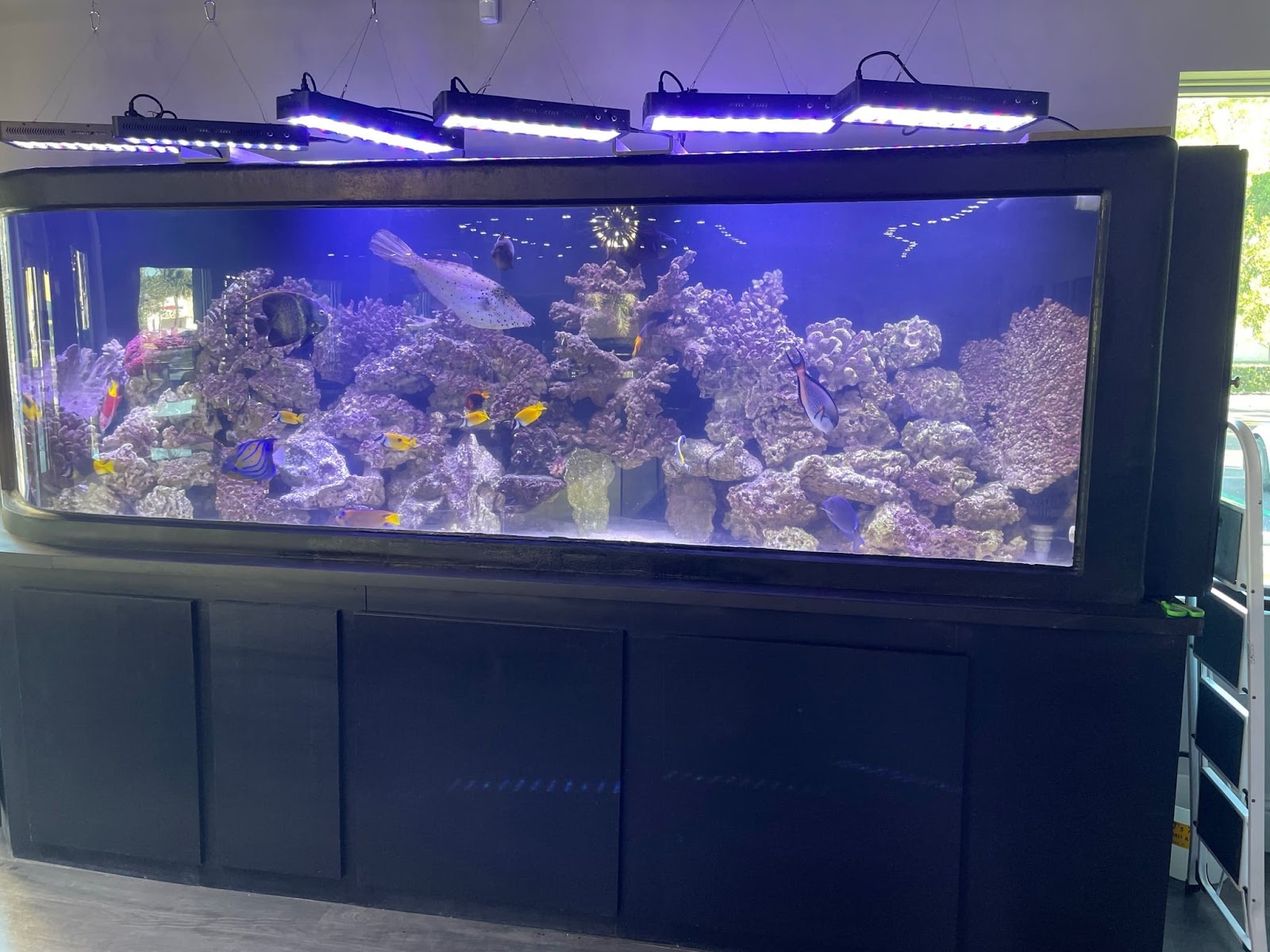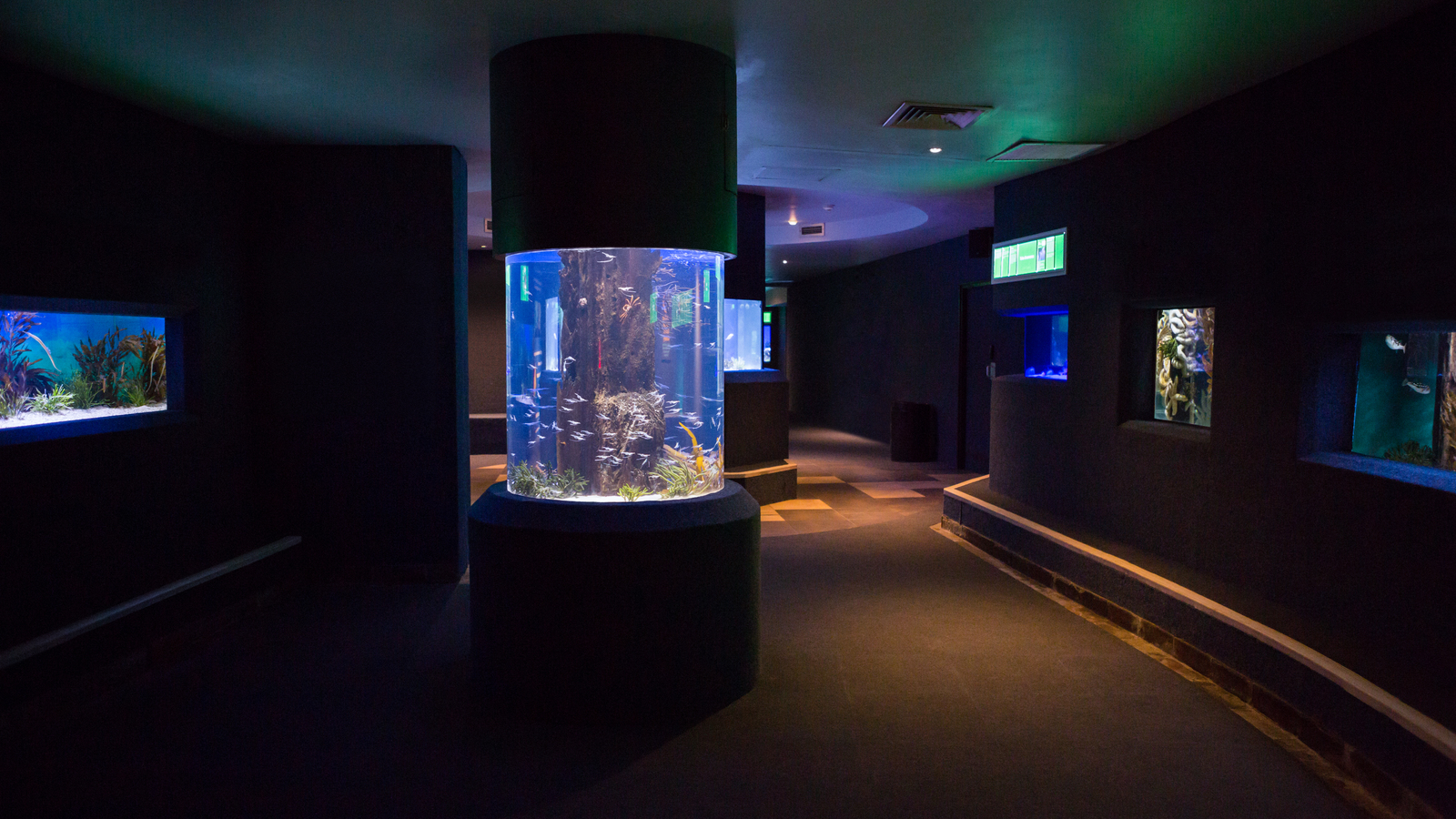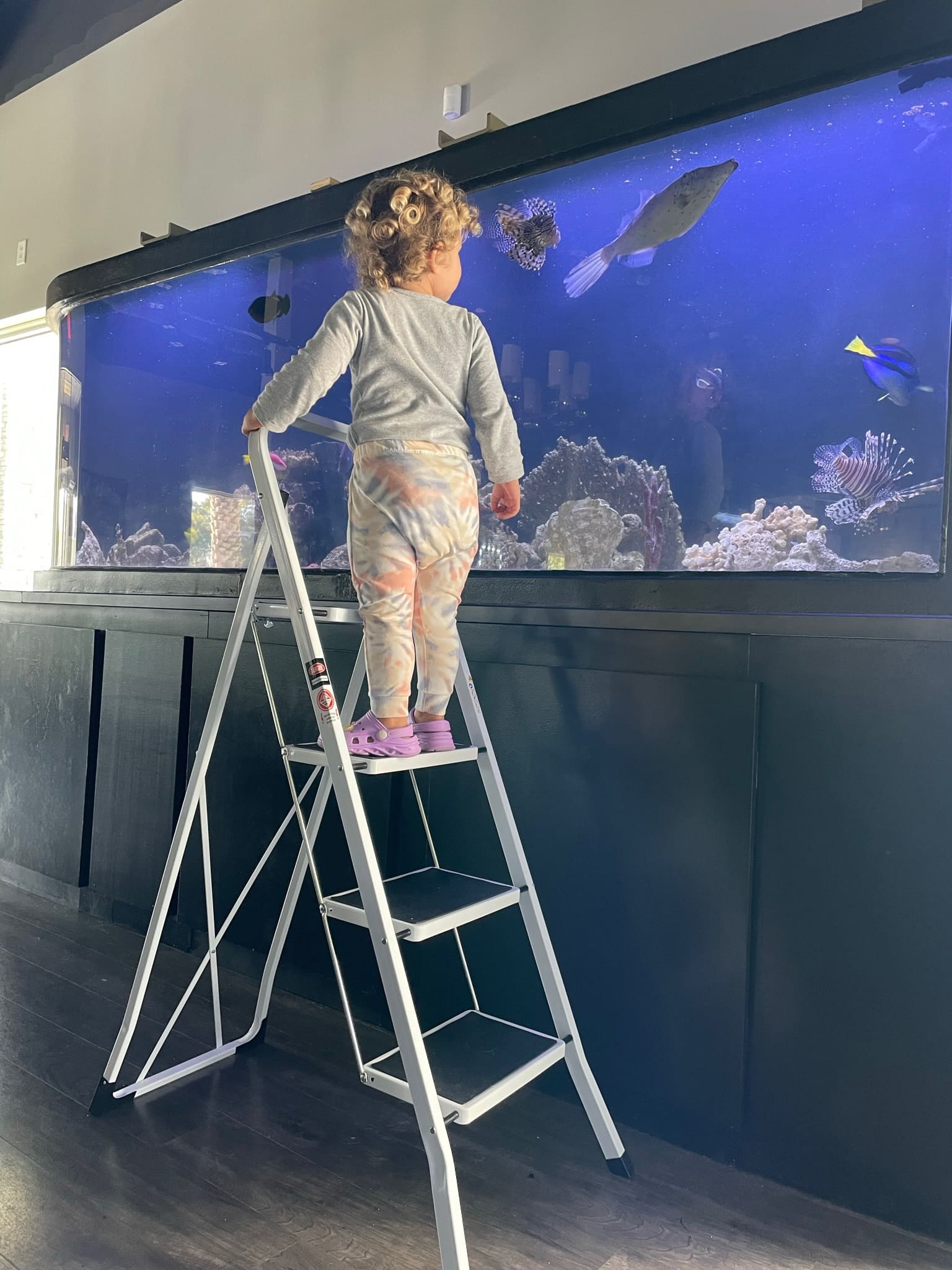Are you dreaming of adding a touch of aquatic elegance to your space? Whether you’re looking to create a serene sanctuary or a vibrant underwater world, choosing the right aquarium can be a delightful yet daunting task. This guide will help you make an informed decision that fits your lifestyle and space.
Why Choose an Aquarium?
Choosing an aquarium as a hobby or as part of your home or office environment comes with several compelling benefits:
- Aesthetic Appeal: Aquariums add a unique visual element to any space. The vibrant colors of fish, plants, and decorations create a dynamic and serene focal point that can enhance the overall ambiance of a room.
- Stress Relief: Watching fish swim gracefully in an aquarium has been shown to reduce stress and anxiety. The calming effect of an aquarium can create a peaceful environment, making it a popular choice for homes and workplaces.
- Educational Value: An aquarium offers an opportunity to learn about aquatic ecosystems, fish behavior, and the responsibility of caring for living creatures. It’s an educational experience that can be shared with children, teaching them about biology, ecology, and the importance of maintaining a balanced environment.
- Customizable Experience: Aquariums can be tailored to fit your personal preferences and available space. From small desktop aquariums to large, elaborate setups, you can choose the size, type of fish, plants, and decorations that suit your style.
- Therapeutic Benefits: For some people, caring for an aquarium provides a sense of routine and responsibility, which can be therapeutic. Feeding fish, cleaning the tank, and maintaining the water conditions can create a calming routine that brings satisfaction and joy.
- Conversation Starter: A well-maintained aquarium can be a great conversation piece, sparking interest and admiration from guests. It also provides an opportunity to share your passion for aquatic life with others.
- Pet Ownership: For those needing more time or space for more demanding pets, an aquarium offers a way to enjoy the benefits of pet ownership without the need for extensive care. Fish require less attention than many other pets, making them a practical choice for busy individuals.

Understanding Aquarium Types
Before selecting an aquarium, it’s essential to understand the different types available. The two primary categories are freshwater and saltwater aquariums.
Freshwater Aquariums
These are the most common and are typically easier to maintain. They can house a wide variety of fish and aquatic plants that thrive in non-saline environments. Due to their relatively simple setup and maintenance requirements, they are often recommended for beginners.
Freshwater tanks are also more cost-effective, as the fish and equipment are less expensive than their saltwater counterparts.
Saltwater Aquariums
Saltwater aquariums, also known as marine aquariums, are designed to mimic the ocean environment. These tanks are home to many colorful and exotic marine life, including fish, corals, and other invertebrates.
While saltwater aquariums offer the opportunity to create a vibrant and diverse underwater world, they require more specialized equipment and knowledge to maintain.
The saltwater environment must be carefully balanced, and the fish and corals are often more sensitive to changes in water quality. As a result, saltwater aquariums are typically recommended for more experienced aquarium enthusiasts.
Assessing Your Space
The size and layout of your space play a crucial role in determining the appropriate aquarium for your needs. Start by measuring the available area, including height, width, and depth. Consider the following factors:
- Location: Choose a spot from direct sunlight to prevent algae growth and temperature fluctuations.
- Support: Ensure that the furniture or stand can support the weight of the filled aquarium.
- Accessibility: Ensure easy access to power outlets and water sources for regular maintenance.
Choosing the Right Size
Aquariums come in various sizes, from small desktop tanks to large custom installations. Here’s how you can decide the best size for your space:
Small Aquariums (5-20 gallons) are perfect for limited spaces like desktops and small countertops. They are low-maintenance and ideal for housing small fish species or shrimp.
Medium Aquariums (20-50 gallons) offer more flexibility regarding fish variety and aquascaping options. They fit well in living rooms and offices without overwhelming the space.
Large Aquariums (50+ gallons) provide ample room for a diverse range of fish and intricate designs. However, they require more space, time, and resources to maintain.
Understanding Aquarium Materials
Aquariums are typically made from glass or acrylic. Each material has its pros and cons:
Glass Aquariums are usually more affordable and resistant to scratches. They offer clear visibility and maintain their shape well over time.
Acrylic Aquariums are lighter and more impact-resistant than glass. They can be molded into unique shapes, providing a customizable aesthetic. However, they are more prone to scratching.
Filtration Systems
A reliable filtration system is vital for maintaining a healthy aquatic environment. There are three main types of filtration:
Mechanical Filtration removes debris and particles from the water using a sponge or filter floss.
Biological Filtration involves beneficial bacteria that break down harmful substances like ammonia and nitrites.
Chemical Filtration uses activated carbon or other media to remove toxins and impurities from the water.
Lighting Considerations
Proper lighting is essential for your aquatic inhabitants’ health and the aesthetic appeal of your aquarium. Different types of lighting include:
LED Lighting is energy-efficient and offers customizable color spectrums to enhance the appearance of your tank.
Fluorescent Lighting is cost-effective and suitable for freshwater setups, providing adequate light for plant growth.
Metal Halide Lighting is ideal for reef tanks, offering intense light that promotes coral growth and vibrant colors.

Heating and Temperature Control
Maintaining a consistent water temperature is crucial for the well-being of your fish and plants. Consider the following:
Heaters help regulate the water temperature, especially in tropical tanks. Choose a heater with an adjustable thermostat for precise control.
Thermometers monitor the water temperature, ensuring it stays within the optimal range for your specific fish species.
Aquascaping Essentials
Aquascaping refers to the art of designing the layout and decor of your aquarium. Here are some tips to get started:
Substrate Selection includes gravel, sand, or specialized plant substrates. The choice depends on the type of tank and the needs of your aquatic plants.
Decorative Elements like rocks, driftwood, and artificial plants add visual interest and provide hiding spots for fish.
Live Plants beautify the tank and contribute to a healthier environment by absorbing nutrients and producing oxygen.
Setting Up Your Aquarium
Setting up your aquarium involves several steps to ensure a successful start:
- Clean the Tank thoroughly to remove any dust or debris.
- Install the Filtration System, heater, and lighting according to the manufacturer’s instructions.
- Add Substrate and arrange decor elements to create a pleasing layout.
- Fill the tank with water, and treat it with a water conditioner to remove chlorine and other harmful chemicals.
- Cycle the Tank by letting it run for a few weeks to establish beneficial bacteria before adding fish.
Selecting the Right Fish
Selecting the right fish for your aquarium is critical in creating a healthy and harmonious aquatic environment. The choice of fish depends on several factors, including the type of aquarium (freshwater or saltwater), the size of the tank, and the compatibility of different species.
1. Freshwater Aquarium Fish
Freshwater fish are generally easier to care for and are ideal for beginners. Here are some popular freshwater species:
- Betta Fish: Known for their vibrant colors and flowing fins, bettas are solitary fish that prefer living alone.
- Guppies: Hardy and easy to care for, guppies come in a variety of colors and are great for community tanks.
- Tetras: These small, schooling fish are peaceful and add movement to your tank.
- Cichlids: Though some cichlids can be aggressive, many species are suitable for a community tank, offering bright colors and interesting behaviors.
- Goldfish: A classic choice, goldfish are resilient but require larger tanks due to their growth potential.
2. Saltwater Aquarium Fish
Saltwater fish are often more colorful and exotic but require more care. Some popular saltwater species include:
- Clownfish: Famous for their association with sea anemones, clownfish are relatively hardy and a popular choice for beginners.
- Tang: With their striking colors, tangs are active swimmers and need plenty of space.
- Angelfish: These fish are known for their beautiful patterns and require a stable environment.
- Gobies: Small and colorful, gobies add diversity to a saltwater tank.
- Wrasses: Wrasses are active and come in various colors, but they can be territorial, so careful selection of tank mates is essential.

Ongoing Maintenance
Regular maintenance is vital to keeping your aquarium in top condition. Here are some basic tasks to include in your routine:
- Water Changes: Perform partial water changes every 1-2 weeks to remove toxins and replenish essential minerals.
- Filter Maintenance: Clean or replace filter media to ensure efficient filtration.
- Monitor Water Parameters: To maintain a healthy environment, test the water regularly for pH, ammonia, nitrite, and nitrate levels.
Conclusion
Choosing the right aquarium for your space is a rewarding endeavor that brings the beauty and tranquility of the underwater world into your home.
By considering factors like size, materials, filtration, lighting, and fish selection, you can create a thriving aquatic environment that suits your lifestyle. Ready to take the plunge? Explore the endless possibilities at Boca Aquarium and start your aquarium adventure today!


